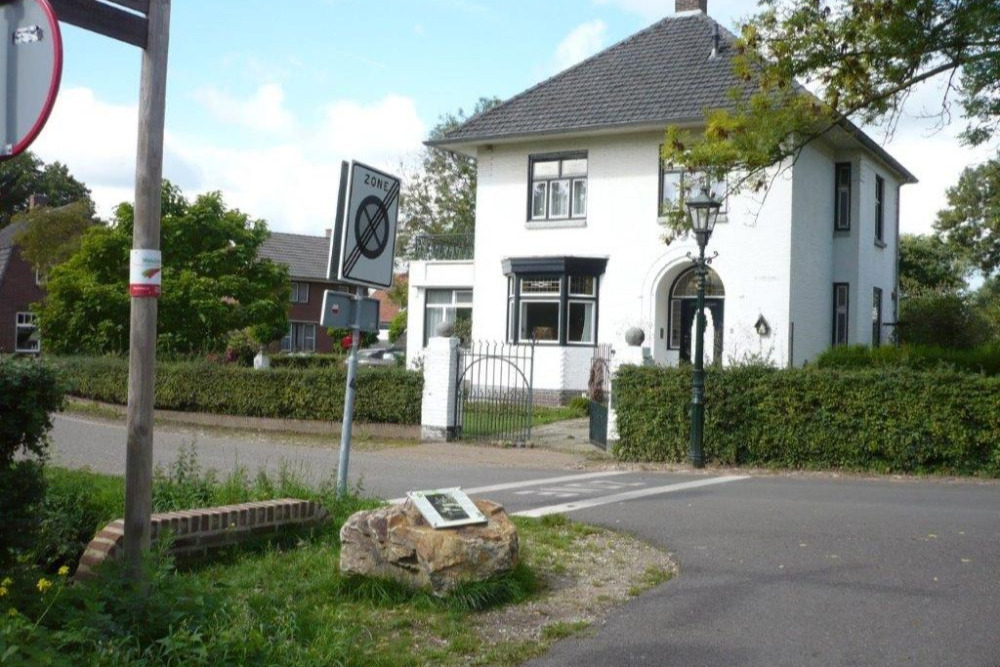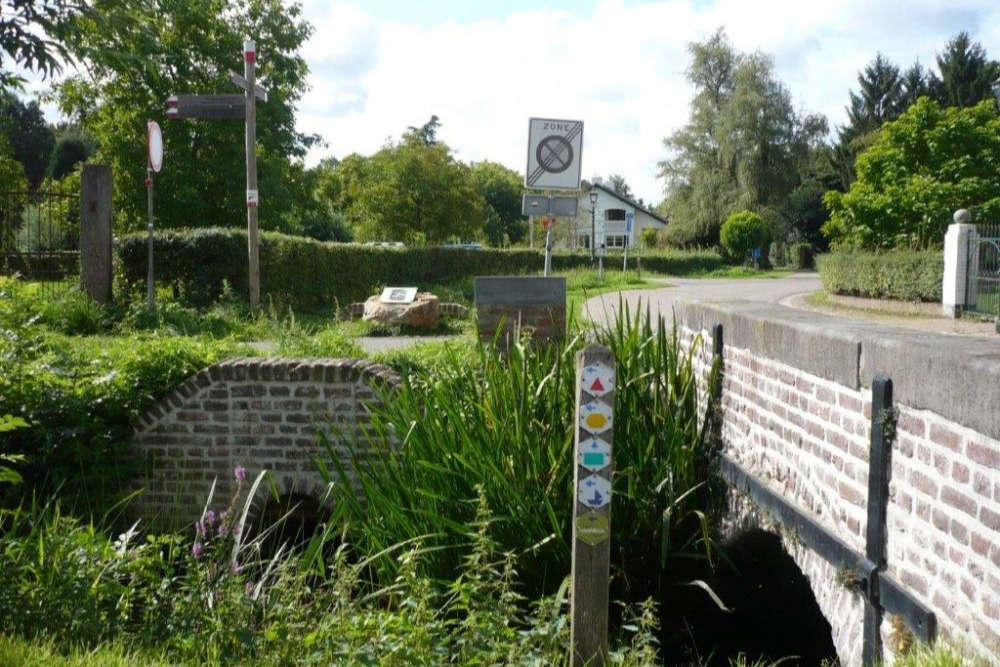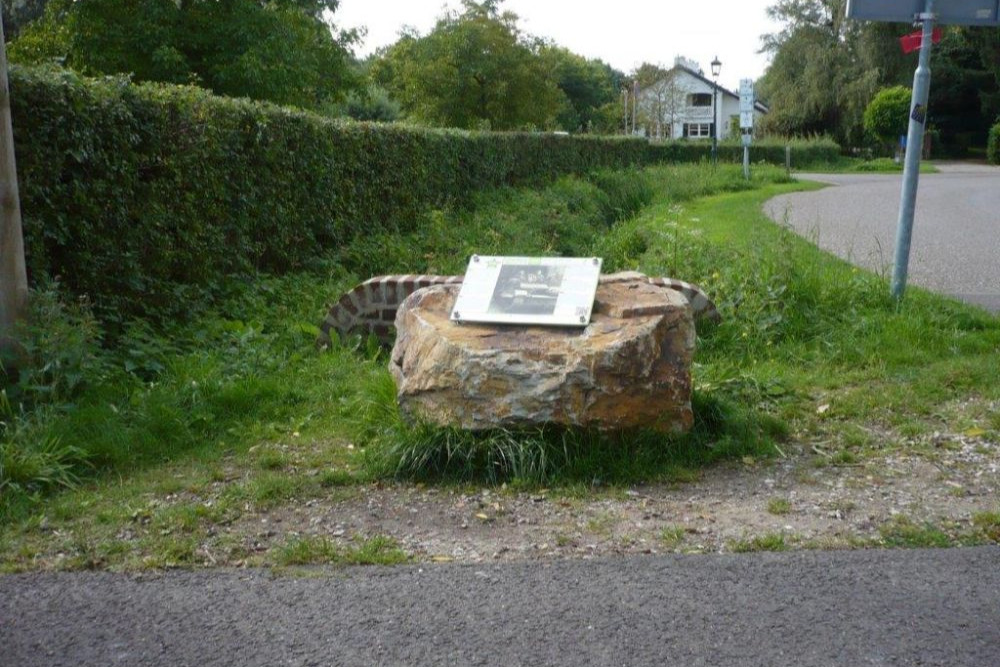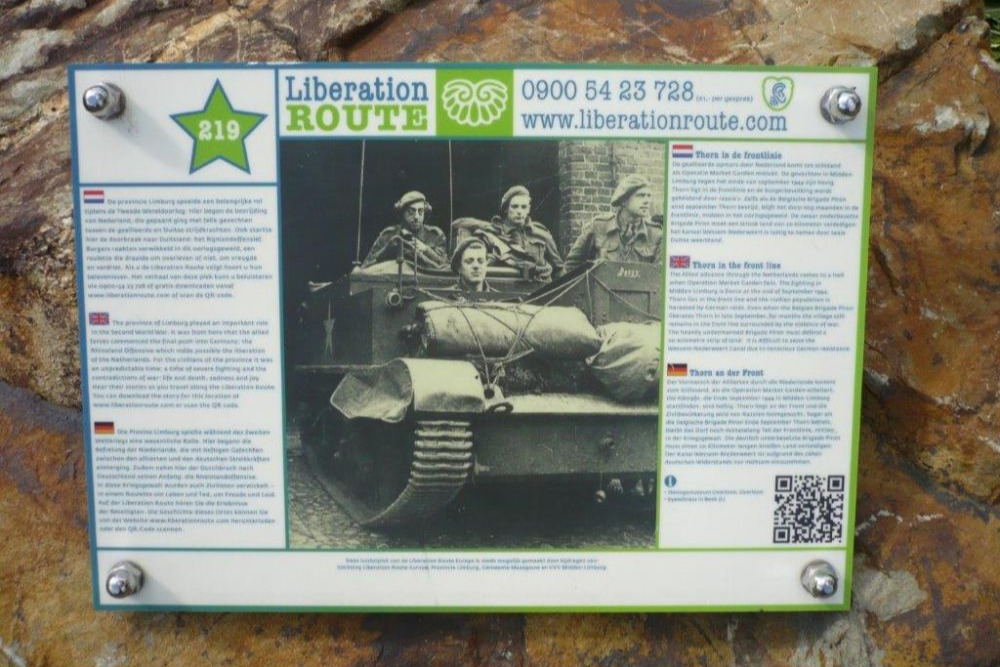Liberation Route Marker 219: Thorn in the frontline
Thorn in the frontline
The Allied advance through the Netherlands comes to a halt when Operation Market Garden fails. The heavily undermanned Belgian Brigade Piron does everything it can to defend a 20-kilometre strip of land: it is difficult to capture the Wessem-Nederweert Canal due to tenacious German resistance.
The sector between Thorn and Ell (in the west), bordering on the Wessem-Nederweert Canal was liberated in September/mid November by Belgian (and Luxembourg) troops, the Brigade Piron, which was part of the British Eighth Army Corps. It was an independent brigade named after its first commander, Colonel Jean-Baptiste Piron and consisted of soldiers who had escaped the German siege of the British Expeditionary Force in 1940. In the middle of Limburg, the only 1,400-strong Belgian-Luxembourg Brigade Piron had to defend a front roughly twenty kilometres wide between Ell and Heppeneert, a front line where normally an entire division of 13,000 troops would be deployed. The 7th Fallschirmjägerdivisie under General Erdmann was active in this area. The undermanned Brigade Piron was barely able to cope. The Germans built defensive reinforcements along the Wessem-Nederweert Canal and used Limburg forced labours to dig trenches and foxholes.
Before its liberation by the Allies, Thorn was occupied by a Fallschirmjäger battalion, backed by a company of the Waffen SS Landsturm Nederland. They carried out raids in the White Town, as Thorn was known. Thorn was liberated on the 25th of September, thereby placing it in the frontline. At that time, the situation was so dangerous the civilian population had, after all, to be evacuated; on the 6th of November, 1,500 of the 1,850 residents left the village. The British eventually succeeded in relieving the Brigade Piron on the 16th of November and permanently take out the German forces.
Audiospot - Thorn in the frontline
Liberation Route Europe is a certified Cultural Route of the Council of Europe. With hundreds of sites and stories in nine European countries, the route links the main regions along the advance of the Allied Forces in 1943-1945.
The entire route consists of themed routes that can be travelled by by hiking, walking, cycling and car. These routes pass numerous historical and interesting sites and tell stories from a multitude of perspectives that were important in the final phase of World War II.
Many routes feature listening spots, offering the opportunity to listen to a historical story at a location. In addition, many ‘Vectors of Memory’ have been placed, indicating that the passer-by is on one of the Liberation Routes.
The routes can be found on the Liberation Route Europe website or in the app through which many stories can also be listened to.
Do you have more information about this location? Inform us!
Source
- Text: TracesOfWar & Liberation Route Europe
- Photos: Arie van Wijngaarden
Nearby
Museum
Point of interest
- V-2 Impact Site Thorn - Thorn
- Reconstruction Den Draad Molenbeersel - Molenbeersel (Kinrooi)
- Bunker Chapel Abbey Lilbosch Echt - Echt
Monument
- Liberation Memorial Thorn - Thorn
- Brigade Piron-bridge - Thorn
- Monument Belgian Soldiers Thorn - Thorn
Cemetery
- Belgian Graves Veterans Kessenich Churchyard - Kessenich (Kinrooi)
- Belgian Graves Veterans Kessenich Cemetery - Kessenich (Kinrooi)
- Dutch War Grave Stevensweert Churchyard - Stevensweert
Remembrance Stone
- Stumbling Stones Bovenstestraat 48 - Echt-Susteren
- Stolperstein Leveroyseweg 1 - Heythuysen
- Stumbling Stone Kloosterstraat 5 - Heythuysen








